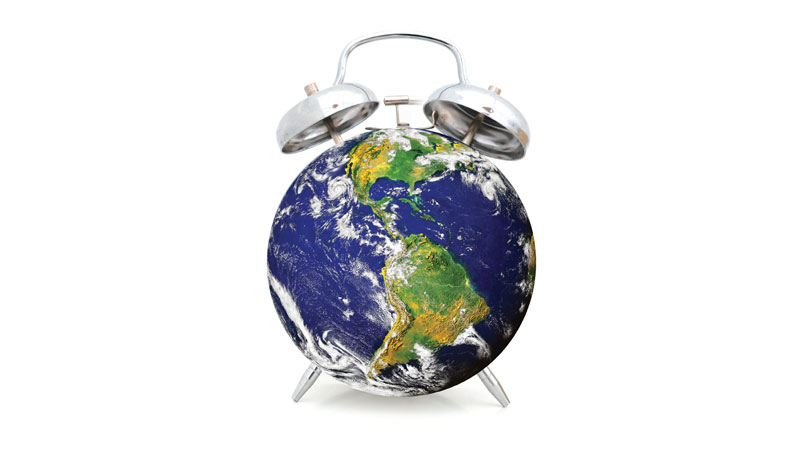By Mike Jarrett
For five months and more, and certainly since the start of 2019, the lead story in daily television newscasts emanating from the US has been the weather.
Winter storms, spring floods and tornadoes have replaced images of out-of-control forest fires, which had replaced images of summer storms and hurricanes. The weather as a topic displaced domestic politics and global affairs from the top of daily television newscasts, fuelling discussion about climate change and global warming. Now the latest scientific reports about sea level rise have created even more discussion but perhaps with more than the usual discomfort and concern.
The doomsday scenario was for sea level rise that would swamp ports in the Caribbean. Even drinking water from wells further inland on coastal plains would become brackish/briny, unfit for human or animal consumption, or for irrigation.
It wasn’t difficult to imagine. A rise in sea levels by just a metre, as was being predicted for the end of this 21st Century, would be disastrous, affecting almost every human being on this planet. Hundreds of millions of human beings crammed into coastal cities around the earth would be affected directly and indirectly. The magnitude of human displacement coupled with a scarcity of precisely quantifiable data about timing, intensity and extent of the consequences of sea level rise (SLR) made it a difficult conversation to introduce, let alone sustain. The predictions were usually presented as a range of outcomes so perhaps the scientists weren’t so sure anyway. Perhaps? Were the doomsday scenarios of yesteryear understated?
Could the scourges of climate change and the humanitarian displacement that scientists warned of be even worse than they had predicted?
Could it be later than we think?
Did we, in uncertainty, disbelief and naiveté, procrastinate in the face of science?
The rise in sea levels had always been one of the main concerns ever since climate change became the subject of global study, and by 2013 when the Intergovernmental Panel on Climate Change (IPCC) – the United Nations body for assessing the science related to climate change – published its fifth assessment report it [SLR] had become one of the most controversial issues. Many scientists at the time felt that the estimates of SLR that had been presented were too conservative. That report anticipated that global oceans would rise between 52 cm and 98 cm by 2100, providing there were no major increases or reductions in emission levels. However, a new study projects that actual rise in sea levels may actually be around twice what was previously predicted.
The new study rests on recent conclusions that global sea levels could rise far more than predicted, because of faster ice melting in Greenland and Antarctica. “The paradox is that, as things are getting worse on the ground, political will seems to be failing,” said UN Secretary General Antonio Guterres on a recent trip to New Zealand.
This new report, Ice Sheet Contributions To Future Sea- Level Rise From Structured Expert Judgment1, is authored by Jonathan L. Bamber, Michael Oppenheimer, Robert E. Kopp, Willy P. Aspinall and Roger M. Cooke and delivers results from a different methodology for predicting sea level rise. In observations and findings published in PNAS (Proceedings of the National Academy of Sciences of the US) at www.pnas.org, scientists confirmed that future SLR poses serious threats to coastal communities. There was, however, concern that projecting these threats accurately was ‘problematic’ at a time when “adaptation strategies urgently require quantification of future SLR uncertainties, particularly upper-end estimates.”
Using a different approach called Structured Expert Judgement (SEJ), they gleaned and then combined the knowledge and experience of eight of the most ‘accurate’ of a pool of 22 identified experts on Antarctica and Greenland. From this knowledge base, the researchers came up with collective judgements about the future. Based on this new data, they now argue that the global total for SLR is more than twice the upper value put forward by the Intergovernmental Panel on Climate Change in the Fifth Assessment Report. They are of the opinion that, at current emissions and global temperatures, the world’s seas would very likely rise by between 62 cm and 238 cm by the year 2100 (rather than the 52 cm and 98 cm previously predicted). This, they noted, in a world that had warmed by around 50C, would be one of the worstcase scenarios for global warming.
“… if expected [global] temperature rises up to 20C, Greenland’s ice sheet remains the single biggest contributor to sea-level rise. However, as temperatures go beyond this, the much larger Antarctic ice sheets start to come into play. It’s only at these higher probabilities for 50C that we see those type of behaviours kicking in,” they stated.

